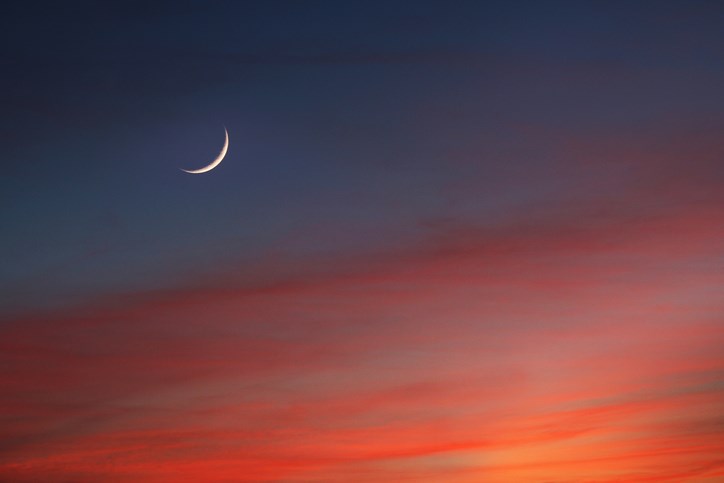We do have some planetary action for the month of August. Saturn and Jupiter are at opposition (opposite the direction of the Sun) on Aug. 2 and 20, respectively. For those with telescopes or good binoculars and steady hands or a good mount, this is the best time of the year to see the rings (scope required) and satellites at their greatest size and separation.
Venus is low in the west all month just after sunset; on the evening of Aug. 10 a two-day-old crescent Moon passes just above Venus about 6 degrees above the western horizon.
Mercury reappears from behind the Sun over the course of the month but will likely be very tough to see. Mercury and Mars pass each other only 0.1 degree apart at about 20:30 on the evening of Aug. 18 but will be nearly invisible in the sunset glow. Although its eastern elongation from the Sun is almost 24 degrees by month-end, that part of the ecliptic heads south of the Sun and, consequently, Mercury won’t get above 4 degrees above the horizon. Catching it may not be impossible but it won’t be easy.
The big deal for August should be the Perseid meteor shower. The source of the orbiting dust and debris that causes the Perseid meteor shower is Comet Swift-Tuttle, formally called 109P/Swift–Tuttle and discovered in 1862. It has a highly elliptical orbit with a period of 133 years and is one of the biggest solar system objects to regularly visit the vicinity of Earth’s orbit. There is an interesting article about the comet at: space.com/33677-comet-swift-tuttle-perseid-meteor-shower-source.html
The comet’s last perihelion was in 1992 and with each close approach to the Sun it sheds little bits of dust and icy debris that continue to orbit the Sun; every year in August we go through that general volume of space and suck up all the bits in our way. The debris cloud from the comet is apparently fairly good-sized so the meteor activity should be spread over several days. If you’re clouded out one night, don’t lose hope! You could get lucky the next night.
This year the peak is predicted to be about noon on Thursday, Aug. 12. The Sunshine Coast Astronomy club is planning a viewing session by the pier on Davis Bay for Friday night, Aug. 13. Sunset is at 20:35 (8:35 p.m.). By 21:00 you’ll see a bright Venus about 6 degrees above the horizon and nearly due west. To the southwest and about 12 degrees above the horizon will be a five-day-old crescent Moon. Both will set by about 23:00 and the stage is set for the Perseid shower. Generally, the number of meteors will increase after local midnight – about 01:00 our time – when Earth’s rotation puts us on the leading hemisphere in our orbit.
Meteor showers have been traditionally named by the constellation from which all the tracks appear to radiate; in this case, the radiant will be about 30 degrees above the northeast horizon. It’s somewhat academic from an observer’s point of view, however; while the meteors will appear to radiate from Perseus they can appear anywhere in the sky. There’s no need to stare at the constellation Perseus; just find a spot with the best view of the sky, lie back in comfort and look up. No equipment required except maybe a thermos of your favourite hot beverage.
Remember, all of the movements of Moon and planets described can be checked out on the web at: www.heavens-above.com. There will be no regular meeting of the Astronomy Club until September, other than the Perseid viewing session. Information updates may be found at the club website at: sunshinecoastastronomy.wordpress.com.



